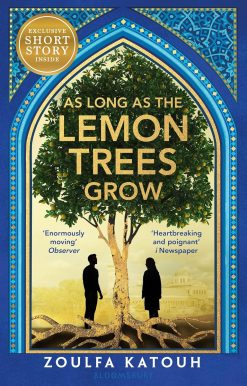The Innate Capacity to Transform Overwhelming Experiences: Waking the Tiger: Healing Trauma
18.95 JOD
Please allow 2 – 5 weeks for delivery of this item
Add to Gift RegistryDescription
Now in 24 languages.Nature’s Lessons in Healing Trauma…Waking the Tiger offers a new and hopeful vision of trauma. It views the human animal as a unique being, endowed with an instinctual capacity. It asks and answers an intriguing question: why are animals in the wild, though threatened routinely, rarely traumatized? By understanding the dynamics that make wild animals virtually immune to traumatic symptoms, the mystery of human trauma is revealed.Waking the Tiger normalizes the symptoms of trauma and the steps needed to heal them. People are often traumatized by seemingly ordinary experiences. The reader is taken on a guided tour of the subtle, yet powerful impulses that govern our responses to overwhelming life events. To do this, it employs a series of exercises that help us focus on bodily sensations. Through heightened awareness of these sensations trauma can be healed.
Additional information
| Weight | 0.436975 kg |
|---|---|
| Dimensions | 2.1082 × 15.1892 × 22.8346 cm |
| Author(s) | |
| Format Old` | |
| Language | |
| Pages | 288 |
| Publisher | |
| Year Published | 1997-7-7 |
| Imprint | |
| Publication City/Country | USA |
| ISBN 10 | 155643233X |
| About The Author | Peter Levine, Ph.D. is the originator and developer of Somatic Experiencing® and the Director of the Foundation for Human Enrichment. He holds doctorate degrees in both Medical Biophysics and Psychology. During his thirty year study of stress and trauma, Dr. Levine has contributed to a variety of scientific, medical, and popular publications. His book, Waking the Tiger: Healing Trauma is in its fifth printing and receiving wide international attention. Peter was a consultant for NASA during the development of the Space Shuttle, and has taught at hospitals and pain clinics in both Europe and the U.S., as well as at the Hopi Guidance Center in Arizona. He lives near Lyons, Colorado, on the banks of the St. Vrain River. |
| Table Of Content | ContentsIntroductionPrologueGiving the Body Its Due Finding a Method • Body and Mind • The Body As Healer • How To Use This BookSection I: The Body As Healer1. Shadows from a Forgotten PastNature’s Plan • Why Look to the Wild? • Trauma is Physiological • It’s About Energy2. The Mystery of TraumaWhat is Trauma? • Chowchilla, California • Waking the Tiger: A First Glimmering3. Wounds That Can HealTrauma Is Not a Disease But a Dis-Ease4. A Strange New LandTrauma is Not a Life Sentence • The Strange New Land • Trauma! • What We Don’t Know Can Hurt Us • A Traumatized Person’s Reality • Get On with Your Life • Who Is Traumatized? • Causes of Trauma5. Healing and CommunityShamanic Approaches to Healing • Somatic Experiencing® • Acknowledging the Need to Heal • Let Us Begin—Calling the Spirit Back to the Body6. In Trauma’s ReflectionMedusa • The Felt Sense • Let the Body Speak Its Mind • Using The Felt Sense to Listen to the Organism • How the Organism Communicates • Sensation and the Felt Sense • Rhythm: All God’s Children Got It7. The Animal ExperienceThe Animals Do It Too • When the Reptilian Brain Speaks, Listen! • One with Nature • Attunement • The Orienting Response • Flee, Fight…or Freeze • The Return to Normal Activity • Animals as Teachers8. How Biology Becomes Pathology: FreezingThe Stage is Set • Blame It on the Neo-cortex • Fear and Immobility • “As They Go In, So They Come Out” • Like Death Itself • It’s a Cumulative Effect • How Biology Becomes Pathology 9. How Pathology Becomes Biology: ThawingNancy Re-examined: A First Step • It’s All Energy • Marius: A Next Step • Renegotiation • Somatic Experiencing—Gradated Renegotiation • Elements of RenegotiationSection II: Symptoms of Trauma10. The Core of the Traumatic ReactionArousal—What Goes Up Must Come Down • Trauma is Trauma, No Matter What Caused It/ Exercises • The Core of the Traumatic Reaction • Hyperarousal • Constriction • Dissociation/ Exercises • Helplessness • And Then There Was Trauma11. Symptoms of TraumaSymptoms of Trauma • And Around and Around We Go • Out of the Loop12. A Traumatized Person’s RealityThe Threat That Can’t Be Found • Mrs. Thayer • Can’t Synthesize New Information/Can’t Learn • Chronic Helplessness • Traumatic Coupling • Traumatic Anxiety • Psychosomatic Symptoms • Denial • Gladys • What Trauma Survivors Expect • The Last TurnSection III: Transformation and Renegotiation13. Blueprint for RepetitionRe-enactment • July 5th, 6:30 in the Morning • The Vital Role of Awareness • Jack • Patterns of Shock • Without Awareness We Have No Choice • Re-enactment Versus Renegotiation • In the Theater of the body • Post Script: How Far in Time and Space?14. TransformationTwo Faces of Trauma • Heaven, Hell and Healing: A Middle Ground • Let it Flow—Renegotiation • Margaret • What Really Happened? • Renegotiation and Re-enactment • What is Memory? • Brain and Memory • But It Seems So Real! • But I’m Proud to Be a Survivor • The Courage to Feel • Desire and Healing • With a Little Help from Our Friends15. The Eleventh Hour: Transforming Societal Trauma The Animal Approach to Aggression • Human Aggression • Why Do Humans Kill, Maim and Torture One Another? • Circle of Trauma, Circle of Grace, Transforming Cultural Trauma • Epilogue or Epitaph? • Nature Is No FoolSection IV: First Aid for Trauma16. Administering (Emotional) First Aid After an AccidentFollowing an Automobile Accident • Scenario of Healing17. First Aid for ChildrenDelayed Traumatic Reactions • First Aid for Accidents and Falls • Resolving a Traumatic Reaction • How Can I Tell If My Child Has Been Traumatized? • Sammy—A Case History • Traumatic Play, Re-enactment, and Renegotiation • Key Principles for Renegotiating Trauma with ChildrenEpilogue: Three Brains, One MindIndex |
| Excerpt From Book | From Chapter 3: Wounds That Can HealWhen a young tree is injured it grows around that injury. As the tree continues to develop, the wound becomes relatively small in proportion to the size of the tree. Gnarly burls and misshapen limbs speak of injuries and obstacles encountered through time and overcome. The way a tree grows around its past contributes to its exquisite individuality, character, and beauty. I certainly don’t advocate traumatization to build character, but since trauma is almost a given at some point in our lives, the image of the tree can be a valuable mirror.Although human beings have been experiencing trauma for thousands of years, it is only in the last ten years that it has begun to receive widespread professional and public attention… |
Only logged in customers who have purchased this product may leave a review.






Reviews
There are no reviews yet.